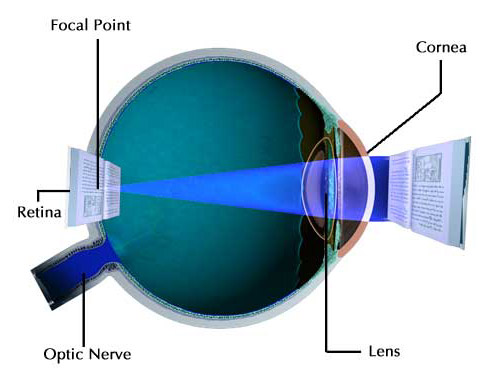-
Understanding Your Eye
No Comments
anatomy of the eye
Cornea: The cornea is the crystal clear dome that covers the front of the eye. The majority (70%) of the bending (refracting) of light rays is accomplished by the cornea.
Lens: The crystalline lens finishes the focusing of light. It helps to “fine tune†vision, and it is able to change shape to allow the eye to focus on near objects. When it becomes cloudy, it is called a cataract.Unlike the cornea, the lens can be made to change its shape (and, therefore, its refractive power) rapidly and voluntarily. Using its ability to change shape, the lens allows the eye to change its focal point. Changes in the shape of the lens will allow a normal eye to focus on near objects.
Iris: The iris controls the amount of light entering into the eye and is the part of the eye that gives it color (i.e., blue, green, brown).
Pupil: The pupil is the opening in the middle of the iris. It functions like the diaphragm in a camera, controlling the amount of light that enters the eye. The pupil is small in bright light and large in dim light.
Retina: The retina is a thin layer of nerve tissue that senses light. Specialized cells called rods and cones convert light energy into nerve signals that travel through the optic nerve to the brain. The retina is analogous to the film in a camera.
Optic nerve: The optic nerve is the nerve that runs from the eyeball to the brain. It carries information from the retina to the brain for interpretation.
Published on September 25, 2009 · Filed under: Uncategorized;
